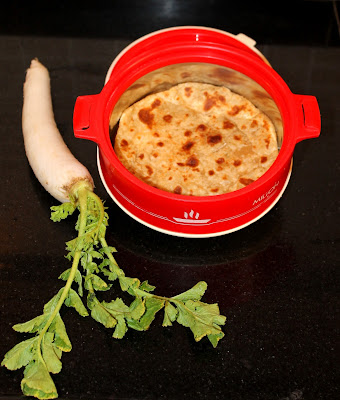PONGAL /
MAKARA SANKRANTI
Pongal is
the most important Tamil Harvest Festival.
Thai Pongal is a four day festival which corresponds to the last day of
the Tamil month Maargazhi to the third day of the Tamil month Thai.
Pongal is
also known as ‘Thamizhar Thirunaal’, the
festival of Tamizha.
Though Pongal is
observed on the same day all over India, but the celebrations vary from place
to place. Yet, bonfires and feasts are the common elements in Pongal
celebration everywhere. Pongal festival has strong regional
flavours and is observed throughout India, and is most well known as Makara
Sankranti / Lohri / Samkranti/ Magha Bihu / Tai Pongal / Uttarayana , in
different places.
As the Sun
moves towards the Uttarayana, the new configuration lends a touch of warmth to
mother earth and is essentially a festival dedicated to the Sun God.
Bhogi : First Day
The day
preceding Pongal is called Bhogi. On
this day people discard old belongings and celebrate new possessions. The
people assemble at dawn in Tamil Nadu to light a bonfire in order to burn the
discards. Houses are cleaned, painted and decorated to give a festive look. The
horns of oxen and buffaloes are painted in villages. In Tamil Nadu farmers keep
medicinal herb (neem, avram, sankranti)in northeast corner of each fields, to
prevent crops from diseases and pests.
A special puja is performed on the first day of Pongal
before the cutting of the paddy. Farmers worship the sun and the earth by
anointing their ploughs and sickles with sandal wood paste. It is with these
consecrated tools that the newly-harvested rice is cut.
Pongal : Second Day
The main event, also known as Thai Pongal, takes place on
the second of the four days.
In the Tamil language the word Pongal means "overflowing,"
signifying abundance and prosperity.
During the festival milk is cooked in a Pot made out of Mud or Bronze .
When it starts to bubble and overflows out of the vessel, freshly harvested
rice grains are added to the pot. At the same time other participants blow a conch
called the sangu and shout "Pongalo Pongal”
Kolam / Rangoli of Sun God is drawn
, where we get Direct Sunrays and will be decorated with flowers and
Neivedhyam is offered. Neivedhyam
includes Sarkarai Pongal, Sugar Cane ,
Medu Vadai, Rice , Dal, Fruits .
The commencement of Thai paves the way for new
opportunities.
People decorate their homes with banana and mango leaves
and embellish the floor with decorative patterns drawn using rice flour. kolams/rangolis
are drawn on doorsteps
Maatu Pongal : Third Day
Maatu Pongal is celebrated the day after Thai Pongal. Tamils regard cattle
as sources of wealth for providing dairy products, fertilizer, and labor for
plowing and transportation. On Maatu Pongal, cattle are recognized and afforded
affectionately. Features of the day include games such as the Jallikkattu and
taming wild bull.
Kanu Pidi is a tradition for women and young girls. Kolam will be drawn
. Turmeric Pillaiyar ( Turmeric Cone ) will
be kept on it . After lighting lamp , Betel
leaf, betel nuts , fruits will be offered .
Camphor Haarathi and Turmeric Haarathi will be taken .
During Kanu Pidi women feed birds and pray for their brothers' well-being.
As part of the "Kaka pidi, Kanu pidi" feast, women and girls place a
feast of turmeric rice ( made out of leftover
rice from Pongal day ), sugar cane, cooked vegetables, banana and
sweet pongal on 3 ginger or turmeric leaves for crows to share and enjoy.
During this time, women offer prayers in the hope that brother-sister ties
remain forever strong, as they do in a crow family.
Women also says, ..........காக்கா பிடி வைத்தேன், கன்றுப் பிடி வைத்தேன், காக்காய்க்கும், கன்றுக்கும் கல்யாணம், குருவிக்கெல்லாம் கொண்டாட்டம்,
காக்கா
கூட்டம் கலைந்தாலும்,
எங்கள்
கூட்டம் கலையக் கூடாது
On this day celebrants bathe and decorate their cattle with garlands. Cows
are decorated with manjalthanni (turmeric water), Shikakai and oil, apply
kungumam (kumkum) to their foreheads, paint their horns, and feed them a
mixture of venn pongal, jaggery, honey, banana and other fruits
Kaanum Pongal : Fourth Day
Kaanum Pongal, the fourth day of the festival, marks the
end of Pongal festivities for the year. The word kaanum in this context
means "to visit."
Brothers pay special tribute to their married sisters by
giving gifts as affirmation of their filial love.
Celebrants chew sugar cane
The rituals, celebrations, prayers, community
get-togethers and feasting associated with Pongal / Makara Sankranti is only symbolic of a
common thanks giving to Nature as represented by the Sun God, and in the
process, the festivities embody a spirit of brotherhood, unity and gratitude,
with family reunions and merry making generating a lot of happiness , goodwill and cheer.
FEAST:
On the day of Bhogi :
Paruppu Poli and Paruppu Vadai are served along with rice, dal , Vegetables etc.
Paruppu Poli ,
Paruppu Vadai
On the Day of Pongal :
Sarkarai Pongal , which is the main dish is offered to Lord Sun along with Vadai , Rice, Dal , Sugar Cane, Fruits etc.
 Sarkarai Pongal
Vadai
Sarkarai Pongal
Vadai
On the day of Kanu :
Mixed rice varieties are prepared ., like Tamarind rice, Sesame rice, Lemon rice, coconut rice , curd rice and are served along with Vadai , Mix Veg Kootu or Mor Kuzhambu.
Tamarind Rice,
Sesame Rice,
Lemon Rice,
Coconut Rice ,
Curd rice
Vadai ,
Mixed Veg Kuzhambu
Mor kuzhambu
{ Maasa pirappu Tharpanam should be done by those who are regularly doing Tharpanam }




















































